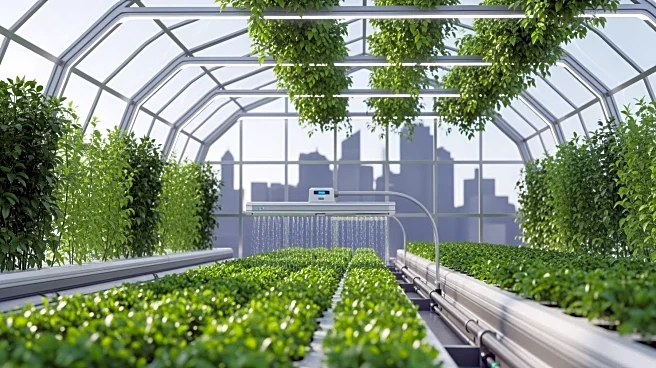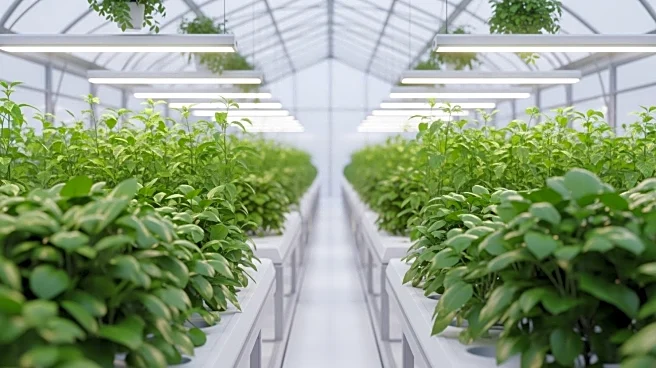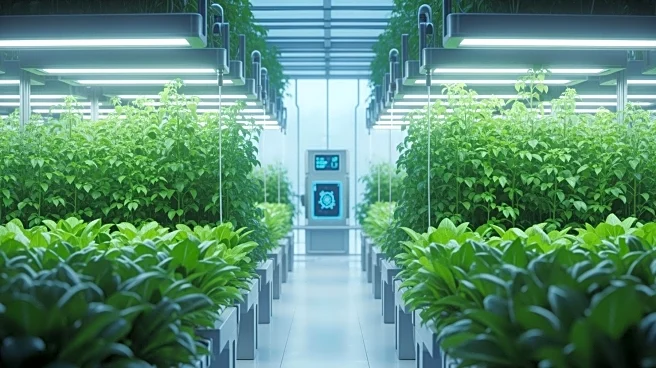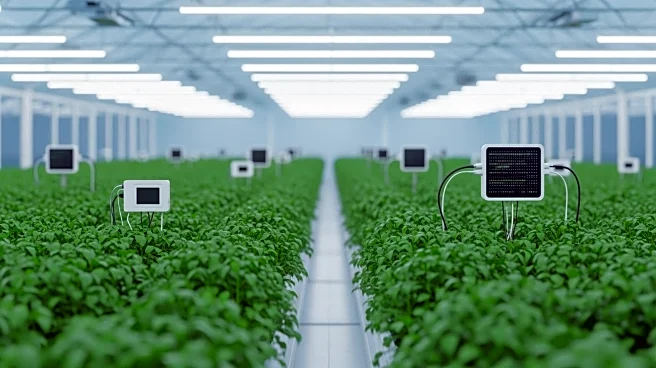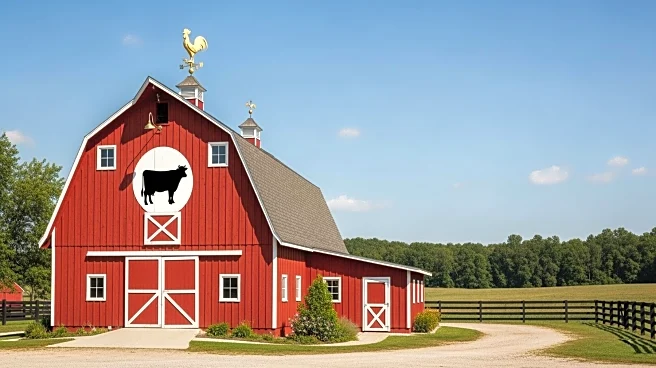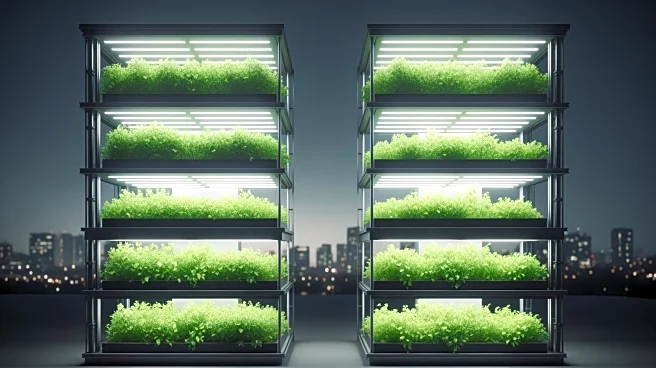What's Happening?
The urban farming market in the United States is anticipated to grow significantly, reaching $311.24 billion by 2032. This growth is driven by an increasing urban population, a rising demand for fresh
and locally sourced food, and the adoption of sustainable agriculture practices. The market, which was valued at $172.62 billion in 2024, is expected to expand at a compound annual growth rate (CAGR) of 7.6% from 2025 to 2032. Urban farming encompasses the cultivation, production, and distribution of crops, vegetables, fruits, and livestock within urban and peri-urban areas. It leverages innovative methods such as vertical farming, hydroponics, and rooftop gardens to address food security, reduce supply chain costs, and promote sustainable agriculture. Recent developments include New York City's municipal grant program to support community hydroponic gardens and the integration of composting and circular economy practices in major U.S. cities.
Why It's Important?
The expansion of urban farming is crucial for enhancing food security and sustainability in densely populated areas. By utilizing advanced technologies like hydroponics and vertical farming, urban farms can produce higher yields in limited spaces, reducing resource consumption and supply chain costs. This growth supports the increasing consumer preference for fresh, locally grown food, motivated by health, sustainability, and traceability concerns. Additionally, supportive government policies and funding are fostering urban agriculture, aiming to improve food security, promote green spaces, and drive economic development within urban environments. The urban farming market serves households, restaurants, and local retailers, driving eco-friendly, locally sourced food solutions.
What's Next?
The urban farming sector is likely to see further advancements in technology and increased investments in indoor farming technologies, particularly for leafy greens and herbs. As demand for locally grown food continues to surge, urban farms are expected to expand their production capabilities and enhance sustainability practices. Government initiatives and municipal programs supporting urban agriculture are anticipated to grow, providing more opportunities for community engagement and local food production. The integration of composting and circular economy practices is expected to gain momentum, improving sustainability and reducing landfill input.
Beyond the Headlines
Urban farming not only addresses food security but also contributes to environmental sustainability by reducing the carbon footprint associated with traditional agriculture and long-distance food transportation. It promotes biodiversity in urban areas and can transform unused spaces into productive green areas, enhancing urban aesthetics and community well-being. The shift towards urban farming reflects broader societal trends towards sustainability and localism, potentially influencing consumer behavior and urban planning policies in the long term.
